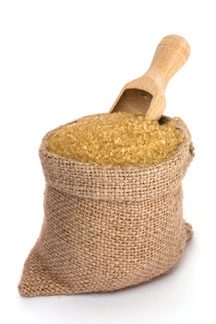| << Back |
Feeling Fit: How Sweet It Is
By Hana Haatainen Caye
It seems like the issue of sweeteners has never been so complicated. Use this, don’t use that. Go organic. Avoid processed sugar and aspartame. Ban high fructose corn syrup. If you’re confused, welcome to the club. So what’s the best choice? As with any other food product, you’ll want to stick with options that are less processed and higher in nutrients. Still need some help deciding? Here are some sweet nothings for you to consider:
- Stevia
A member of the chrysanthemum family, the herb stevia (also known as sweetleaf) can be up to 300 times sweeter than sugar. Despite having a sometimes bitter aftertaste, stevia has gained popularity for its calorie free status, and since it contains no carbs, it ranks a zero on the glycemic index, which measures the effect of carbohydrates on blood sugar levels.
Baking with stevia can be a bit tricky, as some types can be sweeter than others. The general rule of thumb is to substitute one cup of sugar for ½ teaspoon of stevia extract powder or 1 teaspoon of liquid stevia. To add bulk to the recipe, you will need to add 1/3 cup applesauce, yogurt or juice, according to your specific taste preferences.
- Honey
Raw honey has often been called one of nature’s wonder foods due to its impressive amount of nutrients, which include natural enzymes, phytonutrients and minerals. While not a zero like stevia, it rates low on the glycemic index at only 30, versus refined white sugar’s GI of 80. In order to access the numerous health benefits, raw honey should be consumed raw as increased heat will destroy the beneficial enzymes and phytonutrients.
As with stevia, baking with regular (non-raw) honey requires some adjustments. Use ¾ cup honey for every cup of sugar. Since you will be adding more liquid, make sure to cut back on others or add more flour to maintain the consistency required in the recipe. Honey helps make baked goods moist and acts as a natural preservative.
- Coconut sugar
Packed with nutrition and low on the glycemic index at 35, coconut sugar can replace refined white sugar for baking, offering a taste that’s similar to brown sugar with hints of caramel. Rich in vitamins, minerals and amino acids, coconut sugar offers a healthy alternative that can help keep blood sugar levels low and reduce your risk of diabetes.
Coconut sugar can be substituted 1 for 1 with regular sugar when baking; however, you might have to add more to suit your taste, as it is not quite as sweet as regular sugar. It works well in hot cereals and steamed grains such as oatmeal or sprinkled over fruit.
- Turbinado sugar or raw sugar
While turbinado sugar (raw sugar) ranks a bit higher on the GI at 65, it remains a good option because there is no bleaching and minimal processing involved. Additionally, it has fewer calories than refined white sugar. The crystals are much larger than normal and it retains a slight molasses flavor, making it a perfect addition to coffee or tea.
There are a few challenges when it comes to baking with raw sugar, as the coarser texture tends to create a sandy consistency. Dissolving the sugar in liquids (such as beaten eggs and vanilla) before adding flour and other dry ingredients generally resolves this issue.
As you can see, there are plenty of artificial sweetener alternatives available. Experiment until you find the perfect solution to suit your tastes. Before long, you’ll be saying, “How sweet it is!”
The Sweetest Choices
Here are some other good, healthy sweeteners made with minimal or no processing:
- Barley malt
- Blackstrap molasses
- Date sugar
- Fruit juice
- Rapadura
- Sucanat (a non-refined cane sugar)
- Unrefined maple syrup








